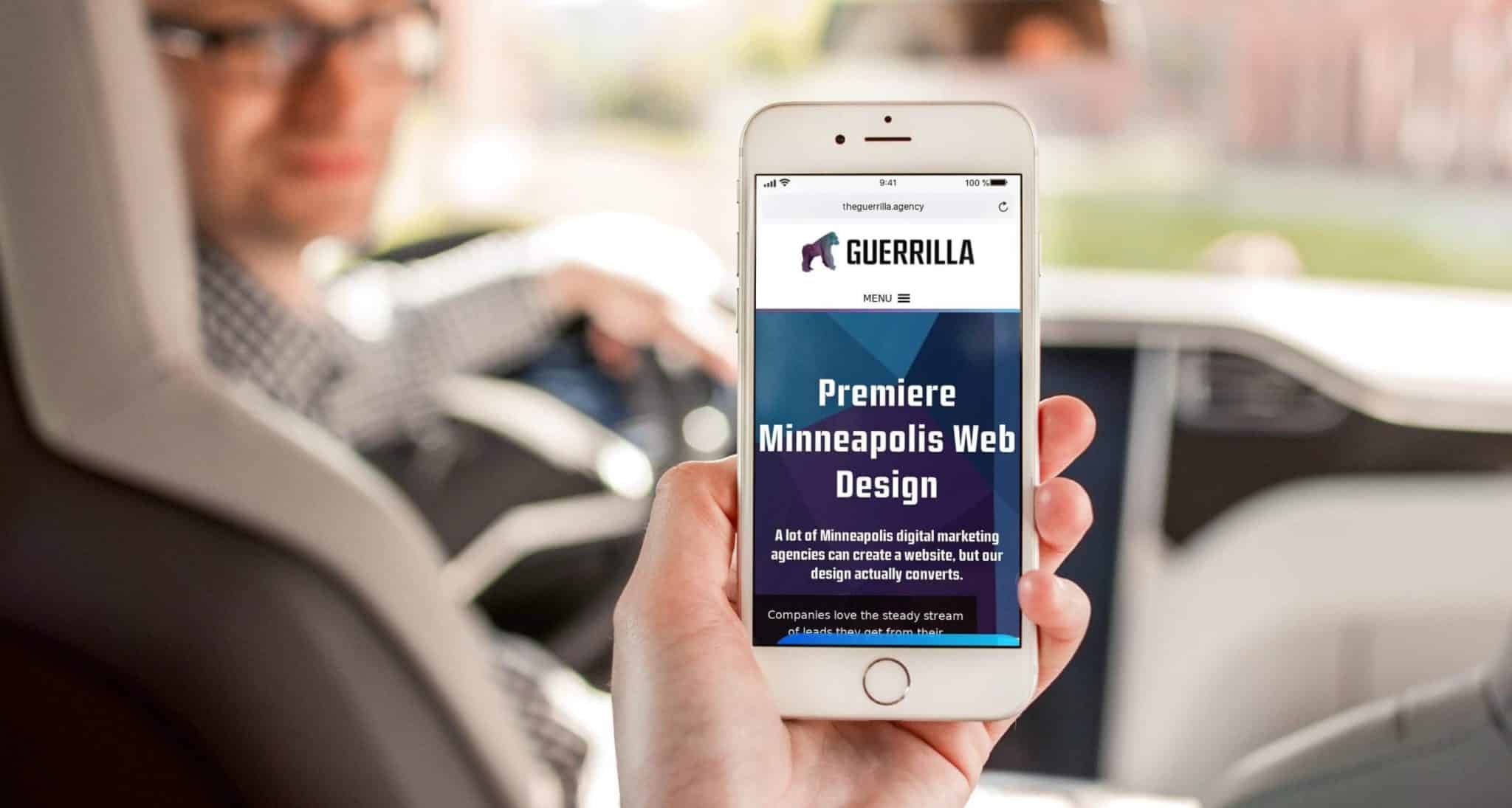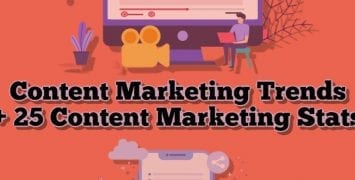Dynamic landing pages have the potential to increase your conversion rate. There’s quite a bit of debate in the marketing world whether it’s worth doing a dynamic landing page or a traditional landing page.
Over 75% of marketers believe that personalized content is important.
Yet, few marketers understand how they can create personalized content.
That’s where a dynamic landing page come in. They can allow you to create personalized landing pages pretty easily. There are also some drawbacks to such personalized content as well.
Keep reading to see if a dynamic landing page is worth it to you.
What Are Dynamic Landing Pages?
Let’s start with the basics. A dynamic landing page is simply a way to customize content for people who click through on your campaign.
Think of a typical static landing page. You’ll have the same headline, picture, text, and phone number for everyone.
A dynamic landing page gives you the ability to customize your content for users. In theory, this will give your prospects something a little more specific to what they’re looking for. That increases the relatability of the ad, and increases your chances they’ll convert.
For example, let’s say you have a PPC campaign for a pet store. Your main keyword is for pet stores Portland Oregon. With a traditional landing page, you’ll have one page with one headline, one image, the same ad text for every person who sees the ad.
A dynamic landing page would give you the flexibility to customize your content according to interests, locations, keywords searched. In the case of the pet store PPC campaign, you can change the headline to target boxer owners, or people looking for an aquarium.
Pros of Dynamic Landing Pages
The pros of having a dynamic landing page are immense, especially if you run PPC campaigns.
Higher Quality Scores
For example, you’re likely to see an increase in ad quality scores. This because your ad copy can be an exact match with your ad and keywords, making your landing page relevant to Google.
Google ranks ads on a scale from 1–10 based on several factors, your keywords, your landing page text and ad text.
If you run PPC ads, you’ll know that quality scores can lower your cost per click and give your ad a higher position.
With a dynamic landing page, you can make your page relevant by being able to match your landing page text to the ad and keywords automatically.
Not only can you save money by having lower ad costs, you can increase your revenue through higher conversions.
Higher Conversions
Think of it this way, today’s consumer is sophisticated. They expect that companies will cater to their interests. Dynamic landing pages will allow you to do just that.
By having content tailored to a prospect’s needs, they are more likely to trust you and buy from you.
Easy to Change and Test Your Landing Pages
Another point in the pro column is that landing pages are easy to change once you have them set up. If you use an automated tool to create your landing page, making changes is simple.
The easier it is to change your landing page, the easier it is to test it.
Beat Your Competition
You can use dynamic landing pages to beat your competition. You can research what keywords your competition ranks for and how high they rank. Then, you can create a PPC campaign for those keywords your competition ranks for.
Then you can change your landing page include those keywords.
Cons of Dynamic Landing Pages
Some people might cite cost or developer time to develop dynamic landing pages.
The reality is that there are many automated tools available to create dynamic landing pages, which can quickly outweigh the costs to build one.
One point against using a dynamic landing page is that it won’t appear in search engines. With a static landing page, it’s pretty easy for search engines to read and index the code.
Dynamic landing pages use scripts which search engines typically don’t index. This means that the likelihood of your landing page appearing high in organic search results is low.
Given this point, you’re going to have to rely on paid traffic to drive traffic if you decide to use a dynamic landing page.
The big point against using dynamic landing pages is that you have to know and understand how to create URL parameters and understand how they work. A URL parameter allows you to create URLs according to specific metrics, such as keyword used or the source of website traffic.
You also need to know analytics work so you can track which keyword(s) and page versions are working and which ones aren’t. You’re going to want to track:
- What device are people using to access your site?
- What content is getting a good response?
- Where the prospect came from (ad, organic traffic)
- Search terms used to get to your site.
Looking at your analytics will enable you to make good decisions based on data, not on your gut feeling. You can use a tool like analytics to read and understand the data points.
Best Practices of Dynamic Landing Pages
The truth is that there are dozens of variables that make or break a landing page.
For example, did you know that 48% of landing pages have more than one offer?
In that case, giving more than one offer can lower conversion rates. You should have one offer with a very clear and concise call to action.
These are some of the basics you should know that can help your conversions even more.
Your Headline Counts
Your headline should have one goal: to get people to read further. Your headline can determine up to 80%-90% of the success of your landing page.
Writing a good headline is an art form that requires practice.
You want to make people curious, be very specific and set the tone for the rest of the copy.
Create An Offer That Wows Them
You can have the prettiest landing page ever, but if your offer is weak, you can forget about making conversions.
When you create an offer, think about what matters most to your prospect. What’s one thing that you can offer that would make their day?
It could be a course, a webinar, an ebook, or a white paper. The key here is that your prospect has to want it.
You’re going to need to put yourself in your prospects shoes and figure out what’s the most compelling things for them.
Don’t Ignore Color and Design
It’s easy to overlook color and design when it comes to dynamic landing pages. When you create your page, keep it simple and make sure that it loads fast.
You don’t want to lose conversions because your page didn’t load fast enough.
With colors, you want to be sure to use complementary colors, and use a color that will have the call to action button stand out.
Have a Strong Call to Action
Your landing page needs to do one thing: generate an action. As you can see, each component builds on the next, from the headline right down to the call to action.
Be clear and direct when you write your call to action.
For example, what makes a better call to action, “Sign up here” or “Download Your Guide That Will Solve Your Big Problem Now”?
Your call to action should be a not-so-gentle reminder why they came to your page to begin with.
Test Your Pages & Keep Improving
Only 52% of marketers that use landing pages test them to find ways to improve conversions.
Here’s a secret: it’s very rare that you’ll get your landing page right the first time.
That means that there’s a lot of money being left on the table. This where your knowledge of analytics will come in handy. You’ll be able to read data to determine what’s working.
For example, you know that your methods to drive traffic are working, but you’re not getting conversions. When you test, only test one thing at a time. This requires patience and it’s also where most people fail.
If you change five things on your landing page at once, you will have no way to know which change is making a difference.
Are Dynamic Landing Pages Right for You?
There are several advantages to using dynamic landing pages. From potentially increasing conversion rates to customizing content, dynamic landing pages can make a big difference.
It does require an investment of time and energy to personalize your content for multiple audiences, but the payoff can be huge.
However, you still have to make sure your basic landing page is effective and you still have to test to make sure your landing page will increase your conversion rate.




